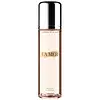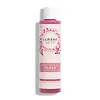What's inside
What's inside
 Key Ingredients
Key Ingredients

 Benefits
Benefits

 Concerns
Concerns

 Ingredients Side-by-side
Ingredients Side-by-side

Methyl Gluceth-20
HumectantGlycereth-26
HumectantLaminaria Saccharina Extract
Skin ProtectingAlgae Extract
EmollientSesamum Indicum Seed Oil
EmollientMedicago Sativa Seed Powder
Skin ConditioningHelianthus Annuus Seedcake
AbrasivePrunus Amygdalus Dulcis Seed Meal
AbrasiveEucalyptus Globulus Leaf Oil
PerfumingSodium Gluconate
Skin ConditioningCopper Gluconate
Skin ConditioningCalcium Gluconate
HumectantMagnesium Gluconate
Skin ConditioningZinc Gluconate
Skin ConditioningTocopheryl Succinate
AntioxidantNiacin
SmoothingSesamum Indicum Seed Powder
Skin ConditioningButylene Glycol
HumectantPPG-28-Buteth-35
Skin ConditioningPPG-5-Ceteth-20
EmulsifyingSodium Hyaluronate
HumectantCitric Acid
BufferingSodium Citrate
BufferingPolysorbate 20
EmulsifyingSucrose
HumectantCaffeine
Skin ConditioningDisodium EDTA
Benzophenone-4
UV AbsorberPhenoxyethanol
PreservativePotassium Sorbate
PreservativeParfum
MaskingLinalool
PerfumingCI 19140
Cosmetic ColorantCI 17200
Cosmetic ColorantMethyl Gluceth-20, Glycereth-26, Laminaria Saccharina Extract, Algae Extract, Sesamum Indicum Seed Oil, Medicago Sativa Seed Powder, Helianthus Annuus Seedcake, Prunus Amygdalus Dulcis Seed Meal, Eucalyptus Globulus Leaf Oil, Sodium Gluconate, Copper Gluconate, Calcium Gluconate, Magnesium Gluconate, Zinc Gluconate, Tocopheryl Succinate, Niacin, Sesamum Indicum Seed Powder, Butylene Glycol, PPG-28-Buteth-35, PPG-5-Ceteth-20, Sodium Hyaluronate, Citric Acid, Sodium Citrate, Polysorbate 20, Sucrose, Caffeine, Disodium EDTA, Benzophenone-4, Phenoxyethanol, Potassium Sorbate, Parfum, Linalool, CI 19140, CI 17200
Water
Skin ConditioningGlycerin
HumectantPEG-40 Hydrogenated Castor Oil
EmulsifyingPPG-26-Buteth-26
Skin ConditioningPrunus Amygdalus Dulcis Oil
Skin ConditioningVaccinium Vitis-Idaea Seed Oil
AntioxidantPhenoxyethanol
PreservativeEthylhexylglycerin
Skin ConditioningPropanediol
SolventAcrylates/C10-30 Alkyl Acrylate Crosspolymer
Emulsion StabilisingXanthan Gum
EmulsifyingCaprylyl Glycol
EmollientSodium Hydroxide
BufferingSodium Hyaluronate
HumectantGlucose
HumectantChondrus Crispus Extract
Skin ConditioningHelianthus Annuus Seed Oil
EmollientRosmarinus Officinalis Leaf Extract
AntimicrobialParfum
MaskingWater, Glycerin, PEG-40 Hydrogenated Castor Oil, PPG-26-Buteth-26, Prunus Amygdalus Dulcis Oil, Vaccinium Vitis-Idaea Seed Oil, Phenoxyethanol, Ethylhexylglycerin, Propanediol, Acrylates/C10-30 Alkyl Acrylate Crosspolymer, Xanthan Gum, Caprylyl Glycol, Sodium Hydroxide, Sodium Hyaluronate, Glucose, Chondrus Crispus Extract, Helianthus Annuus Seed Oil, Rosmarinus Officinalis Leaf Extract, Parfum
 Reviews
Reviews

Alternatives
Ingredients Explained
These ingredients are found in both products.
Ingredients higher up in an ingredient list are typically present in a larger amount.
Parfum is a catch-all term for an ingredient or more that is used to give a scent to products.
Also called "fragrance", this ingredient can be a blend of hundreds of chemicals or plant oils. This means every product with "fragrance" or "parfum" in the ingredients list is a different mixture.
For instance, Habanolide is a proprietary trade name for a specific aroma chemical. When used as a fragrance ingredient in cosmetics, most aroma chemicals fall under the broad labeling category of “FRAGRANCE” or “PARFUM” according to EU and US regulations.
The term 'parfum' or 'fragrance' is not regulated in many countries. In many cases, it is up to the brand to define this term.
For instance, many brands choose to label themselves as "fragrance-free" because they are not using synthetic fragrances. However, their products may still contain ingredients such as essential oils that are considered a fragrance by INCI standards.
One example is Calendula flower extract. Calendula is an essential oil that still imparts a scent or 'fragrance'.
Depending on the blend, the ingredients in the mixture can cause allergies and sensitivities on the skin. Some ingredients that are known EU allergens include linalool and citronellol.
Parfum can also be used to mask or cover an unpleasant scent.
The bottom line is: not all fragrances/parfum/ingredients are created equally. If you are worried about fragrances, we recommend taking a closer look at an ingredient. And of course, we always recommend speaking with a professional.
Learn more about ParfumPhenoxyethanol is a preservative that has germicide, antimicrobial, and aromatic properties. Studies show that phenoxyethanol can prevent microbial growth. By itself, it has a scent that is similar to that of a rose.
It's often used in formulations along with Caprylyl Glycol to preserve the shelf life of products.
Sodium Hyaluronate is hyaluronic acid's salt form. It is commonly derived from the sodium salt of hyaluronic acid.
Like hyaluronic acid, it is great at holding water and acts as a humectant. This makes it a great skin hydrating ingredient.
Sodium Hyaluronate is naturally occurring in our bodies and is mostly found in eye fluid and joints.
These are some other common types of Hyaluronic Acid:
Learn more about Sodium Hyaluronate